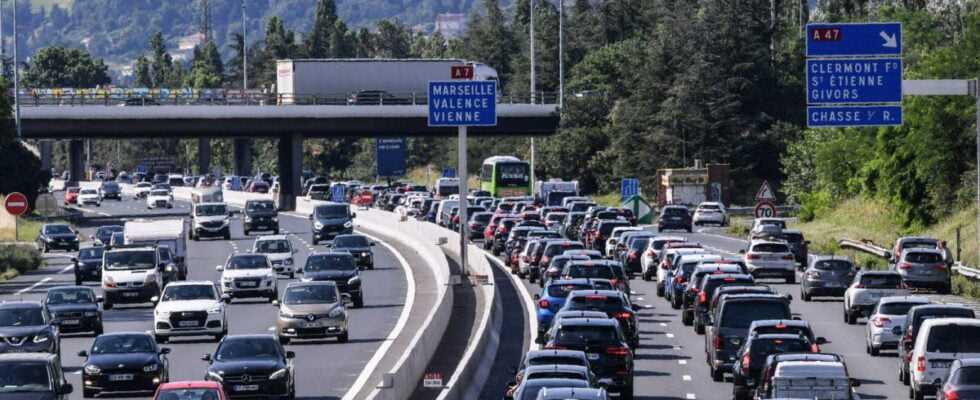The highways have also suffered from the health crisis. In 2020, motorway traffic fell by 22%, with a more marked reduction for light vehicles (-24.3%) than for heavy goods vehicles (-7.7%). This is what reveals the summary of the accounts of the motorway concessions for the 2020 financial year, published on Monday by the Transport Regulatory Authority. The drop in motorway traffic was particularly significant in April 2020, at the time of the first confinement, with an 80% drop. For the Transport Regulatory Authority, this is “a scale never seen” until now.
For all the motorway companies, the confinements had a more marked impact on the traffic of light vehicles (light vehicles) than on that of heavy goods vehicles (HGV). But “the border companies, in particular Adelac and SFTRF, have, in general, been more impacted than the others because of stronger traffic restriction measures for border crossings”, adds the Transport Regulatory Authority.
Which motorway networks have suffered the most from the health crisis? We take stock.
On vehicle traffic
The “palm” goes to the Adelac network, which manages part of the A41 in Haute-Savoie, between Saint-Martin-Bellevue and Saint-Julien-en-Genevois, near Geneva. It recorded an average traffic of 19,537 vehicles per day, a decrease of 29.4% compared to 2019, no doubt due to the closure of borders and ski resorts.
The motorway network which is doing the best is the Albea network, the concessionaire company of the A150 motorway, in Seine-Maritime. The decrease in traffic was only 18.2% in 2020 compared to 2019. This can be explained by the fact that the motorway is intra-departmental, and that several restrictions have targeted travel between departments or regions.
In the south of France, the Escota network is also doing well. This network includes in particular the A8 motorway, which links Aix-en-Provence to the Côte d’Azur, the A50 motorway, which links Marseille to Toulon and the A51 motorway, which links Marseille to Gap. In 2020, 34,651 vehicles per day passed through the Escota network on average, a decrease of 20% compared to 2019.
The motorway concession which recorded the largest drop in light vehicle traffic is the French company of the Fréjus road tunnel (SFTRF), with a fall of 32%. The SFTRF operates the A43 motorway, which links Lyon to Modane, in Savoie. This is the highway taken to reach the ski resorts, which remained closed from March 15 until the end of 2020.
The Adelac network recorded the largest drop in heavy goods vehicle traffic, with a 20.7% drop in traffic. The motorway being cross-border with Switzerland, border restriction measures may explain this significant gap between 2019 and 2020.
For toll receipts
In 2020, the decline in toll revenues fell by 17.6%, despite an average tariff increase of 0.9%.
As the drop in toll revenue is strongly linked to motorway traffic, it is the Adelac network which, in addition to the most marked drop in traffic, recorded the largest drop in revenue: -27%. All the other networks record declines in the national average, around 17-18%.
For investments
The lockdowns have also disrupted the investments of highway companies. The Alicorne company, which operates the A88 motorway, has thus seen a drop of 97.1% in its investments. The Transport Regulatory Authority notes in its summary that “the investments of the company Alicorne are almost nil in 2020. These (…) relate only to maintenance investments. Indeed, the other works initially planned are not could not be carried out due to the health crisis “.
Some companies were still able to maintain their investments, such as Aliénor, whose main motorway is the A65, in western France. Its investments increased by 136.4% in 2020.
